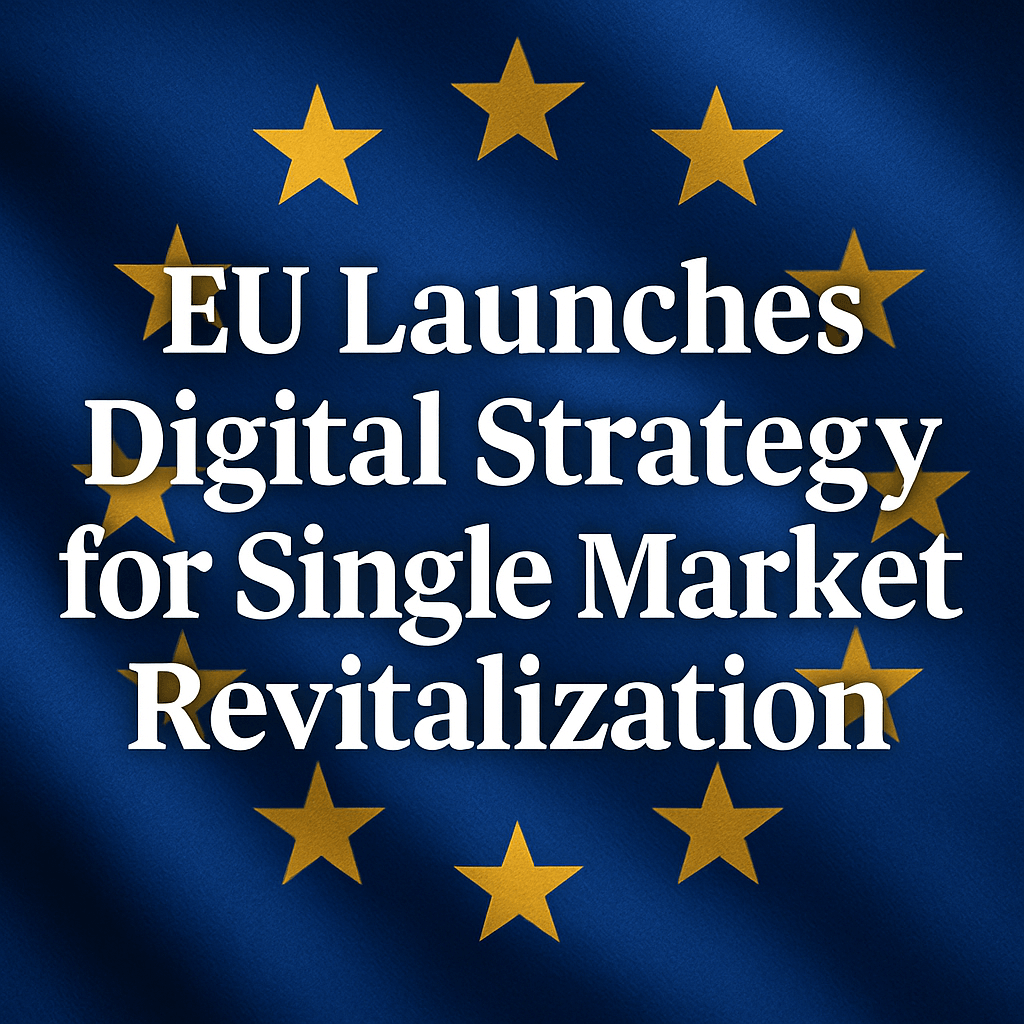EU Launches Digital Strategy for Single Market Revitalization

On Wednesday, EU Commissioner Stéphane Séjourné will present an ambitious strategy aimed at modernising and digitising the European Single Market. Drafted against a backdrop of sluggish global trade and persistent regulatory fragmentation, the plan outlines six key pillars for reform and a complementary Single Market Omnibus proposal designed to streamline cross-border commerce, particularly for small and medium-sized enterprises (SMEs) and mid-caps.
Six Pillars of the Single Market Strategy
- Barrier Removal: Identification and elimination of the ten most impactful market barriers that curtail trade and investment, from divergent national regulations on product safety to incompatible customs procedures.
- Services Market Expansion: Harmonisation of authorisation and certification schemes across member states, targeting some 5,700 regulated services activities.
- SME and Mid-Cap Relief: Reduction of administrative burdens through digital paperwork and data-driven processes.
- Administrative Digitisation: Transition from paper-based exchanges to interoperable digital systems, underpinned by EU data space initiatives and reusable APIs.
- National Implementation: Appointment of “Sherpas for the Single Market” within heads of government offices to oversee domestic application of EU rules.
- Enforcement and Governance: Strengthening the Single Market Enforcement Taskforce (SMET) with an annual high-level political meeting of EU ministers and national sherpas to provide strategic guidance.
Key Legislative Initiatives
- Digital Product Passport (DPP): Mandatory integration under the Ecodesign for Sustainable Products Regulation. The first DPP, covering batteries, is set to go live in 2027, with subsequent rollouts for electronics, textiles, and machinery. Technical specifications include GS1 EPCIS-based data models and blockchain registries for tamper-proof life-cycle tracking.
- Digital Invoicing: Commission proposal due late next year to mandate e-invoices in all public procurement. Current uptake stands at just 30% across member states, according to European Commission internal data.
- Product Rule Framework Reform: Scheduled for Q2 next year, aiming to consolidate over 70 sector-specific directives into a more agile, risk-based approach, leveraging the New Legislative Framework (NLF) and EU-wide type-examination modules.
- Territorial Supply Constraints: New rules to prohibit anti-competitive resale restrictions by large manufacturers, ensuring retailers can freely redistribute goods across borders.
Additional Analysis: Technical Infrastructure and Interoperability
The Commission’s text highlights the fragmentation of current IT landscapes: over 200 national IT platforms, proprietary data formats, and limited cross-border APIs hinder automatic regulatory reporting. A proposed “Single Market Digital Backbone” will rely on the EU’s existing eIDAS 2.0 framework for electronic identification and approved digital wallets to authenticate businesses and workers.
Additional Analysis: Implications for SMEs and Mid-Caps
SMEs currently spend up to 8% of annual turnover on compliance, according to a 2023 SME Assembly report. By shifting from document-centric to data-centric exchanges, the strategy is expected to cut compliance costs by 20–30%. The Omnibus package will introduce a “Regulatory Compliance as a Service” model, enabling firms to access real-time rulebooks and automated conformity checks via a centralised EU portal.
Additional Analysis: Enforcement and Political Oversight
The Single Market Enforcement Taskforce (SMET), established in 2021, will gain increased political clout. An annual high-level meeting—chaired by Commissioner Séjourné—will set priorities, review progress on barrier removal, and coordinate infringement proceedings. National sherpas will provide monthly status reports, creating a more agile feedback loop between capitals and Brussels.
Expert Opinion: “Fragmentation remains the Single Market’s Achilles’ heel,” says Dr. Elena Petrova, senior economist at the Centre for European Policy Studies (CEPS). “The success of the strategy hinges on technical interoperability standards and genuine political will at the national level.”
Next Steps and Timeline
- Wednesday: Presentation of the single market strategy and Omnibus proposal.
- Q4 2024: First high-level SMET meeting to track implementation milestones.
- Late 2024: Commission proposal for mandatory digital invoicing in public procurement.
- 2025: Launch of Regulatory Compliance as a Service and initial reviews of the product rule framework.
- 2027: Operational roll-out of the first Digital Product Passport for batteries.